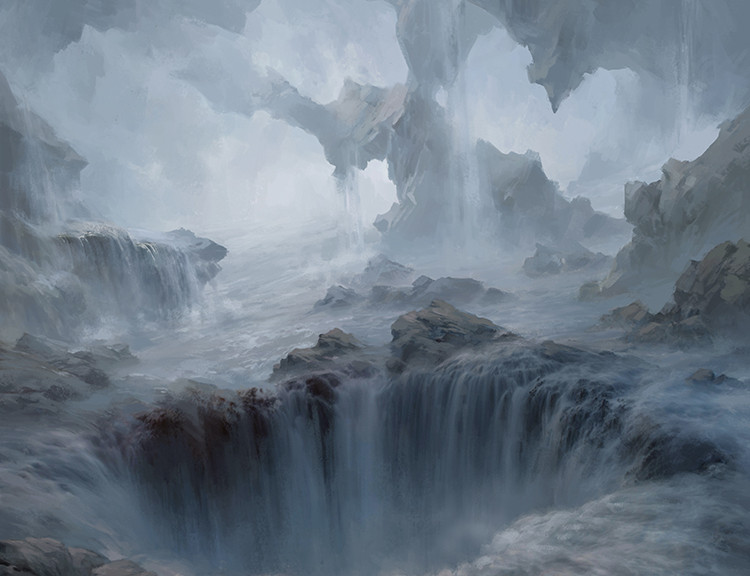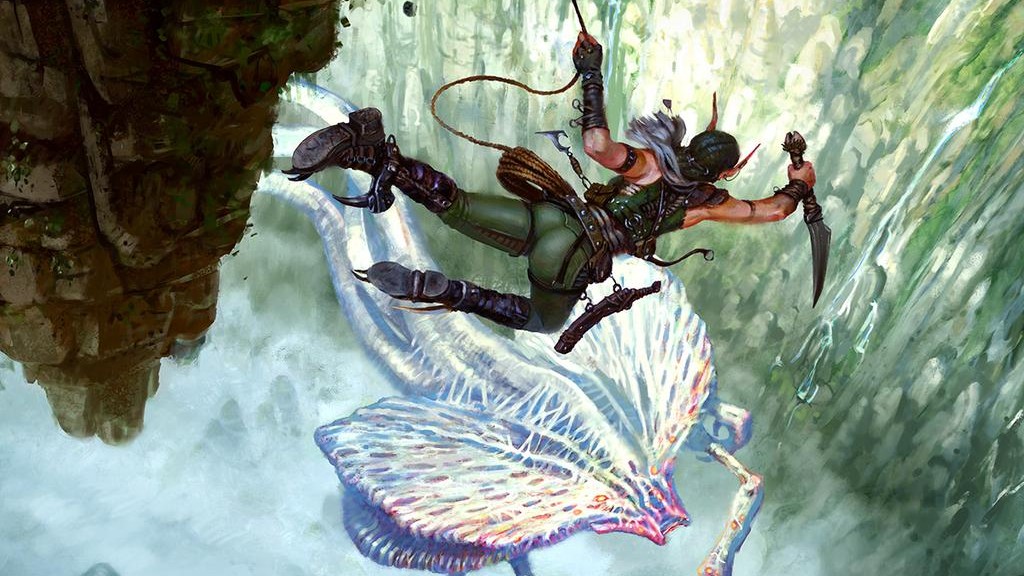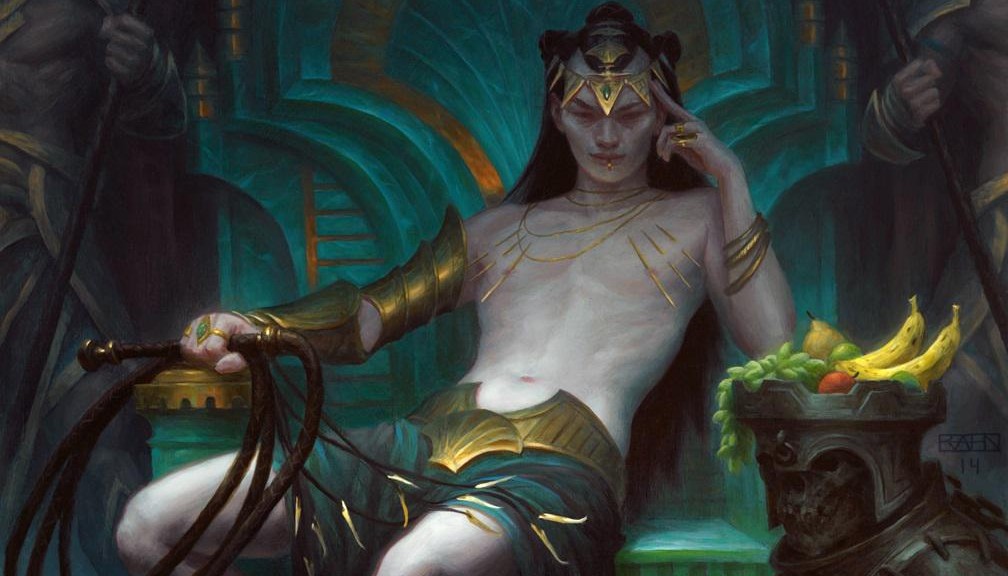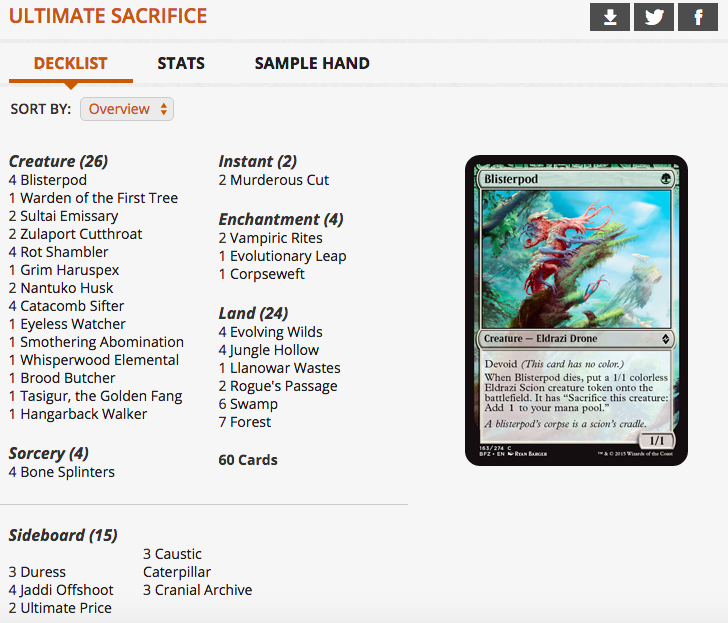I’m diverging from my typical weekly boat pun format where I talk about how a card from a new set is going to cause old cards to go up. I’ll probably be back to my old tricks soon. Today, though, let’s look at the new set and see if anything is going to get pushed up.
Worth the Rarity?
By: Cliff Daigle
So if you’ve been reading things from MTGPrice about the doom and gloom of Battle for Zendikar. You might think this is the worst set ever. Such low power, such cheap cards due to Expeditions, such a waste of time.
I don’t agree.
I feel that there are going to be some cards which will go up during their time in Standard. It’s not going to be the same sort of price graph as other cards, because sets now have 18 months in the format, not 24. Here’s perhaps the best example from the last couple of years, our best-case scenario: Hero’s Downfall.
This was a rare from the most-opened set ever, at the time. There are a lot of things to love about this graph, especially the two spikes. One was at the beginning propelling it to $17 as this card is discovered to be good enough to warrant play as a four-of in any black deck, and one was about a year later, a spike to about $12, as Abzan became the most popular deck in the format.
I don’t think any of Battle for Zendikar has this level of immediate appeal, at least not in the rares. Downfall is fast and universal, and is an excellent card to have alongside Thoughtseize. Having Downfall in your deck means that you can really sculpt what threats you don’t mind your opponent having when you cast an early Thoughtseize, and the two hold hands very well.
The second spike is the most intriguing to me. A year later, after a rotation and some new cards, there was a new surge of interest in the card. I want to think about that. I want to have a few copies of cards that are good enough to see an increase from $1 to $5, give or take.
Here are the cards I think could follow this path, and increase when the next block (or the one after) comes out:
Brutal Expulsion – As others have noted, it’s a darn shame that this doesn’t work with Pyromancer’s Goggles. It would possibly be too good at that point, though. It’s a weird combination of Remand and Cryptic Command, cards that have seen a lot of play, and when this gets cheap I’ll be looking to get my copies.
March from the Tomb – Eight mana’s worth of allies is a wonderful number, especially with haste and lifelink as options for my allies. This seems like a great way to win games out of nowhere, and come back from board wipes easily. Of note is that changelings will work very well with this card in Commander, making foils a very intriguing target.
Noyan Dar, Roil Shaper – For every Ponder, a land becomes a 3/3 haste, or that same land gets an extra three counters. This is another one with combo potential, and it will certainly be a cheap pickup soon.
Painful Truths – Others have discussed this in more detail, but three mana to draw three and lose three life is a pretty good deal. I won’t expect big things out of it, but I’m also not looking to spend too much on it.
Planar Outburst – I feel pretty good about this, especially when End Hostilities rotates out. Wrathing plus getting a creature is a pretty good deal, just ask anyone who’s played Martial Coup. It’ll never be a super expensive card, but the potential for growth is there.
Ruinous Path – Yes, I know it’s not Downfall. It’s a sorcery. It’s been established that it is worse than Downfall. That doesn’t mean it’s not among the best of the options. Removal is getting worse, as you’ve likely noticed. Wizards doesn’t want unconditional two-mana removal, unless perhaps it’s two colors. It would be stronger as an instant but I think this will be the best you can do.
Scatter to the Winds – I can’t give credit because I don’t remember who it is that said in a control deck, you don’t want cards that only win. You want cards that will keep you at parity, and then eventually pull ahead and win. Ashiok, Nightmare Weaver is one example, as it’ll get you a blocker or two and eventually pull too far ahead, all from one card. This is another example. It’s a counterspell at the new cost for such, 1UU, but late game when you’re both playing off the top it’s an answer AND it’s a new threat. I think this has potential in a longer-term scenario.
Wasteland Strangler – I don’t think we have all the tools to trigger this consistently on turn three yet. I think that the new set will give us one or two ways to do that and then this becomes phenomenal. Imagine this alongside a Thoughtseize variant, albeit one that doesn’t suck. Perhaps that says more about how overpowered Thoughtseize is? I don’t like having to rely on one- or two-drop creatures to Ingest in order to power this up, but there’s going to be people who try.
A bonus: Beastcaller Savant (Foil)
I don’t know what the combo will be. I really don’t. But I think that a hasty mana creature in Modern has real potential. I will be looking to pick up a few foils cheap.
Brainstorm Brewery Battle for Zendikar Set Review
Brainstorm Brewery #163- Battle for Zendikar Set Review
Battle for Zendikar Set Review
- Battle for Zendikar Set Review
- Support our Patreon! DO IT. You know this cast makes you more than $1 a week
- Need to contact us? Hit up BrainstormBrew@gmail.com
Contact Us!
Brainstorm Brewery – Website – E-mail – Twitter – Facebook – RSS – iTunes – Stitcher
Ryan Bushard – E-mail – Twitter – Facebook
Corbin Hosler – E-mail – Twitter – Facebook – MTGPrice
Jason E Alt – E-mail – Twitter – Facebook – MTGPrice
Marcel White – E-mail – Twitter
Battle for Zendikar Event Deck Revealed!
We finally got a full look at the Battle for Zendikar Event Deck list today, and it’s a doozy.
Smothering Abomination. Whisperwood Elemental. Tasigur, the Golden Fang. Hangarback Walker. Llanowar Wastes. That’s a lot of value packed into these decks, and you can be sure they’ll be selling at above MSRP for the next few weeks.
Now, before you completely pull the panic cord, I want to note a few things. Yes, the price on these chase cards will suffer, no doubt about it. But it’s also not the death knell for them, and chances are if you need these cards to play with, you’re likely supposed to hold them. Back in the day, we saw Thragtusk—which occupied a similar “all over Standard” role as Hangarback—shrugged off multiple reprints and remained more than $20. I don’t expect Hangarback to do quite that well, but it’s worth taking note of. Furthermore, Windswept Heath lost about 30 percent of its value after its own reprinting, so unless you’re getting more than 70 percent of retail for these chase cards, you’re not going to “profit” in the long term by selling yours now with the intent to rebuy in a month.
Still, this is very much going to inhibit the prices of these cards, and while I still like Tasigur as a long-term spec, this does damage its ceiling a bit and push that timeline out even further.
One final note, even if it seems obvious: if you can find these at MSRP, it’s very much worth your time to buy them and trade out the contents from inside, at least for the first few weeks.
Happy prereleasing this weekend!
Thanks for reading,
Corbin Hosler
@Chosler88 on Twitter/Twitch/YouTube






